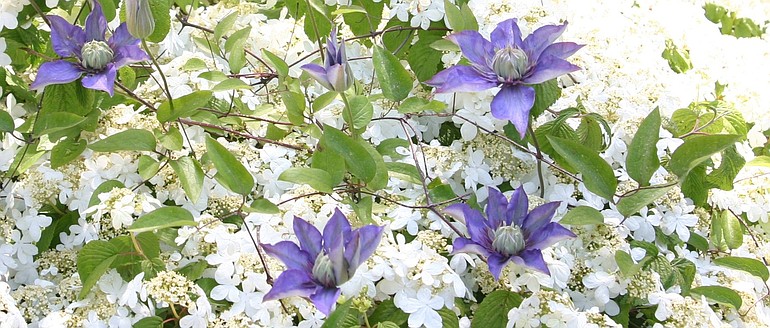If you keep a garden journal, it’s a good idea to include a “to do” page at the beginning of each month. You may see the ornamental grasses along the driveway each afternoon as you return from work and think, “It’s time to cut back that spent foliage.” By the time you get out of the car, you’ve forgotten again.
A note on your April or May “to do” page will ensure you get the job done before you’re caught with 2 feet of new growth coming up through the tattered, spent blades of last year’s ornamental grasses. By looking at my journal from year to year, I’m able to remind myself ahead of time when a specific job needs to be done in the garden.
On the years wh en I weed the perennial beds early, young weeds don’t have time to take strong root or to go to seed. The majority of my garden’s weed problems were minimized for that entire season because the entries in my journal include seasonal reminders to layer deep mulch around gardenias, rhododendrons and tree peonies.
It’s also time to prune flowering shrubs and vines that bloomed in early spring. Use fertilizer sparingly for dahlias to encourage slower foliar growth and more flowers. For an easy container garden that looks good all-season without a lot of fuss, fill a large planter with assorted herbs and place it near a kitchen door.
When I find myself wandering around in circles like the little kid in the cartoon strip “Family Circus,” I take a look at my journal. A note to “fertilize roses as new growth begins” will remind me to get the job done in a timely manner.
Caring for your lawn
Lawn care should also be part of your journal.
The past couple of weeks of rain have given lawns a burst of growth, so you should be mowing on a regular basis now. If you are still planning to put in a new lawn, this is your last chance to sod or seed before fall. You can also fertilize the lawn with a high nitrogen feeder to encourage greening. Do not let your lawn grow too tall between mowing. If you cannot get to it in time, set your mower high and then cut again on a lower setting.
Top dress and reseed bare spots in established lawns. Rake hard over the bare spotted areas and add a thin layer of compost. Spread seed lightly over the entire area and sprinkle another thin layer of compost. Keep the seeds moist and begin mowing when the grass is 3 inches high. Be sure to use a lawn seed made for our unique garden conditions. The packaging should be clearly marked for planting in the Pacific Northwest.
For those concerned with moss in the lawn, treat grassy areas with iron. Usually, lawns that have moss will continue to have moss unless the conditions that cause it to grow are changed. Aerate the lawn area and prune back branches of trees that shade the lawn. Consider removing grass from these areas altogether and planting one of the many wonderful low-maintenance ground covers available in the Northwest.
Encourage pollination
Spring is also a time to consider plants that will encourage pollination.
You may want to consider what colors the different plant pollinators prefer before selecting plants for your garden. Yellow, blue, and purple attract bees. Butterflies choose red, orange, yellow, and pink. Flies are drawn to green, lime, white, and cream. For hummingbirds, plant red, orange and purple-red.
The once-simple yellow daylily now comes in multi-colored, twice-blooming, variegated, picotee and tetraploid varieties. With the growing interest in gardening as a hobby and a lifestyle, commercial growers make every effort to entice us with new plant introductions. Show your appreciation by encouraging local nurseries to carry a wide selection of plants and by giving your business to those with helpful, knowledgeable staff and healthy plants.
Years ago, a dear friend of mine gave me all the plants from her garden that were not blue, pink or white. She wanted to grow only those colors in her garden so she could cut any combination for a bouquet and have it fit the mood of her home. My memory of her returns each spring along with the flowers she gave me. My favorite is a brick-red daylily that is on the verge of blooming. Seeing it in my garden evokes a mix of joy and melancholy.
Robb Rosser is a WSU-certified Master Gardener. Reach him at Write2Robb@aol.com.



